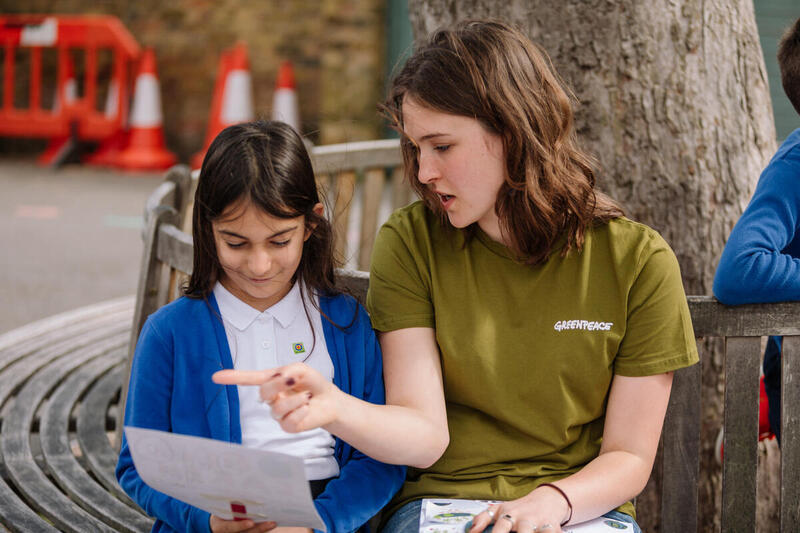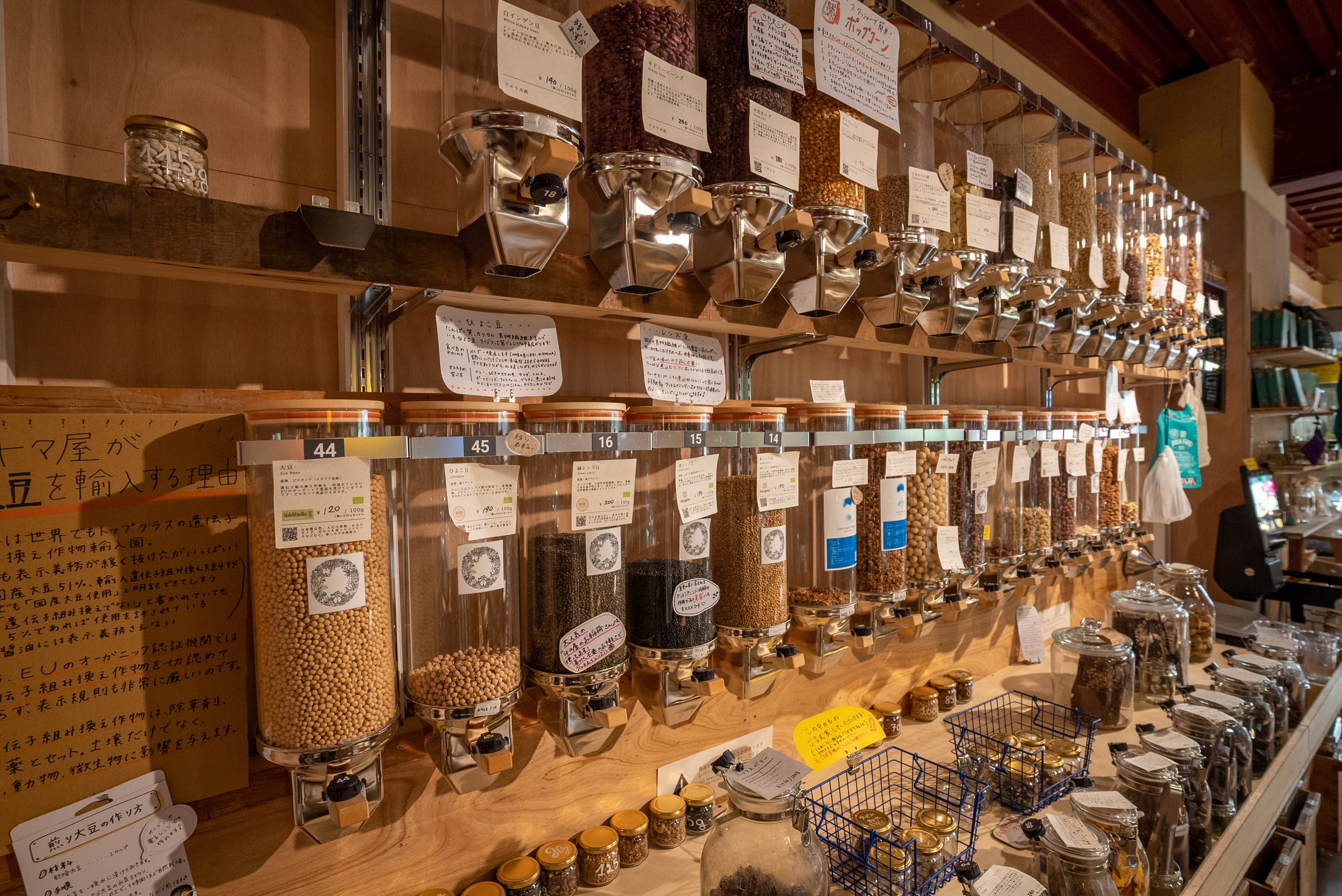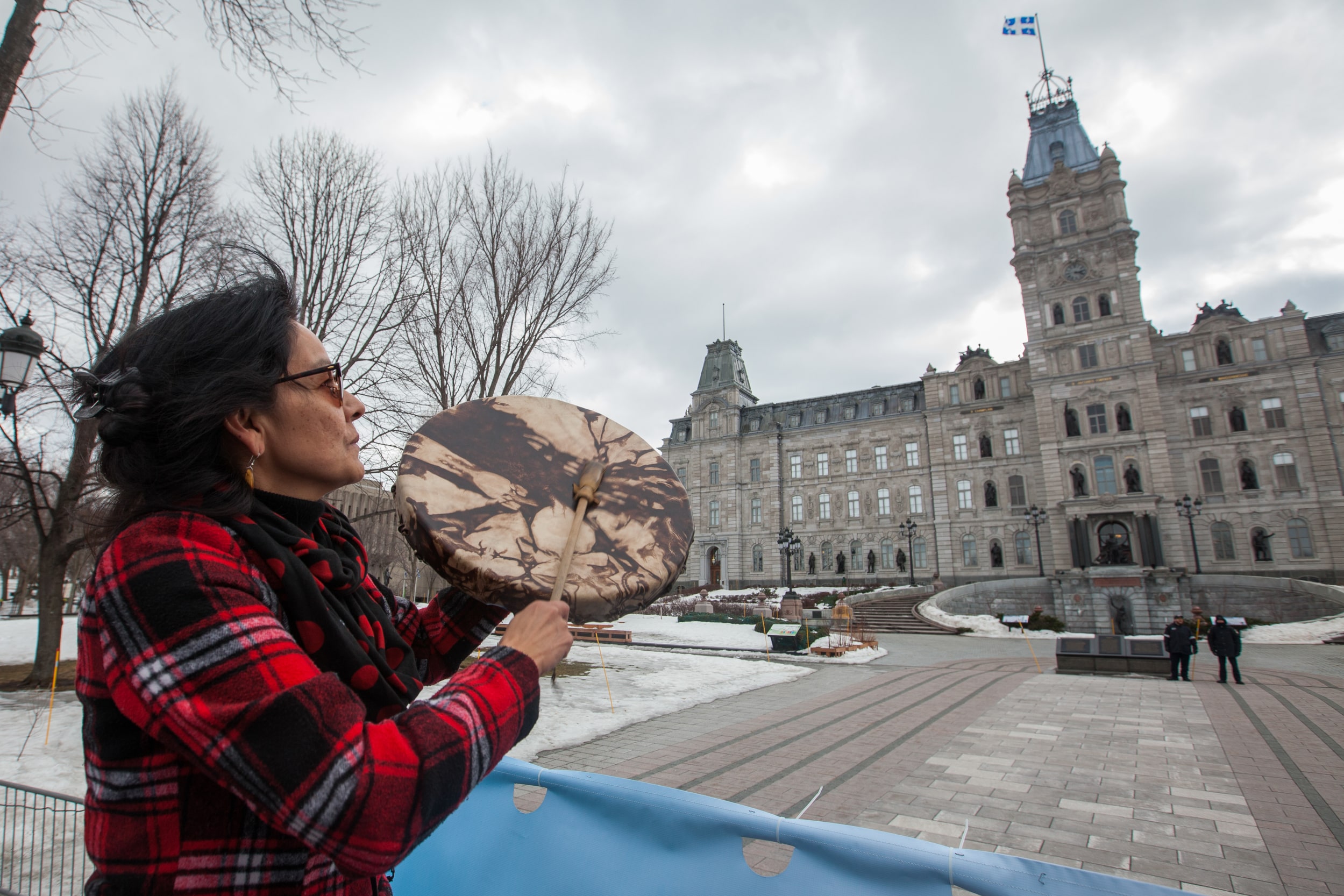Feeling unsure about how to talk to kids about climate change? Perhaps you’re overwhelmed by the amount of information out there and the size of the problem. Or you don’t want the young people in your life to worry. Here are six simple tips to make those tricky conversations easier.
Tip 1: Listen
It may seem strange to start an article about “talking” by asking you to listen. But listening is a great way to learn what kids have already heard about climate change. You can ask them what they know or how they feel about what they know.
Being open to listening without judgement also creates a safe space for what may be hard conversations to come. The truth is that many young people feel anxiety about the climate crisis. It’s important to recognize when kids just want to share their feelings rather than learn more.
Tip 2: Nurture their love of nature
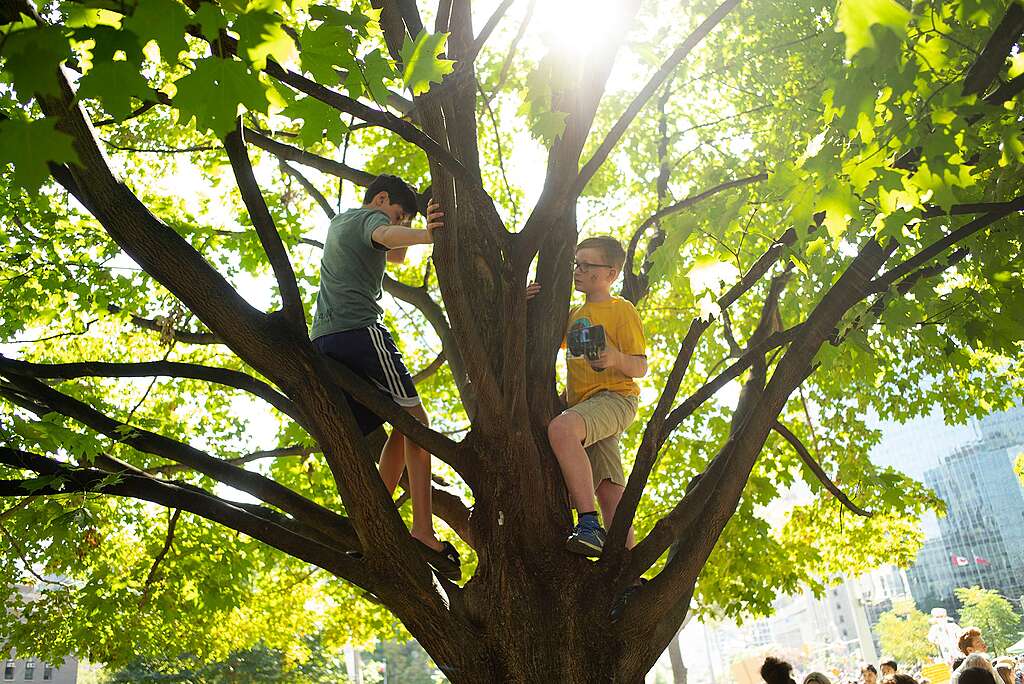
Kids who love nature may be more motivated to learn about climate change and act on it. Helping kids connect to nature is also a good place to start when they’re too young to understand the science, say, of how greenhouse gas traps heat in our atmosphere.
Try walking in the park or on community trails, go camping or birdwatching, or plant a pollinator garden and watch for visitors. Getting outside and into nature can also balance climate anxiety by calming stress and improving mental health.
Check out this article from the David Suzuki Foundation on 10 creative ways to get kids into nature.
Tip 3: Explain the science with age appropriate strategies
Kids in kindergarten may not understand something as invisible as a greenhouse gas. But they may be feeling heat waves, smelling smoke from wildfires, watching out for ticks, or experiencing other impacts of climate change. You can tell them that these things are becoming bigger problems because of climate change.
Illustrations, videos, and interactive apps and games that show how greenhouse gases contribute to climate change can bring the science to life for kids of all ages.
NPR suggests the following script for explaining climate change to children as young as four or five:
“Humans are burning lots and lots of fossil fuels for energy, in planes, in cars, to light our houses, and that’s putting greenhouse gases into the air. Those gases wrap around the planet like a blanket and make everything hotter. A hotter planet means bigger storms, it melts ice at the poles so oceans will rise, it makes it harder for animals to find places to live. And it’s a really, really big problem, and there are a lot of smart people working hard on it, and there’s also lots that we can do as a family to help.“
NRDC recommends these different strategies for ages 0 through 18, from inspiring wonder, to engaging a child’s personal strengths and interests, to sharing news articles.
For teachers looking for things to do in the classroom (or parents looking for projects), NPR has some creative suggestions, including labs, citizen science, research projects, multimedia presentations, speeches, service projects, or school gardens.
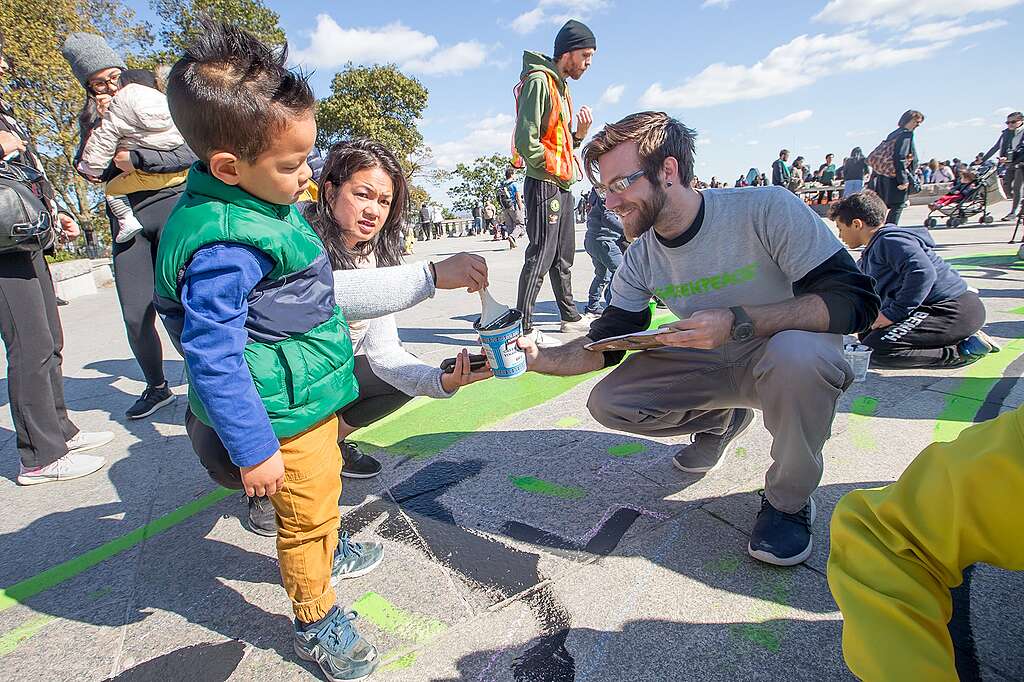
Tip 4: Offer solutions and hope
Don’t just tell kids about all the problems climate change causes. Uplift them with the solutions.
Explain that many people are working on solutions, from governments to individuals. And that when many individuals work together to take meaningful actions in their own lives and communities, those actions can grow big enough to make big change.
You can also talk about global solutions, like the Global Plastics Treaty or Global Ocean Treaty. These two UN treaties are bringing world governments together to solve the major problems of plastic pollution and threats to the oceans.
Tip 5: Empower and inspire action
Young people around the world are leading and marching in climate strikes. They’re suing their governments for the right to a greener future. The kids in your life may be inspired by youth activists leading the climate movement worldwide, like Autumn Peltier, Xiuhtezcatl Martinez, and Leah Namugerwa.
Find some actions kids can take at home, at school, and in their community to work toward climate change solutions. They might roll up their sleeves at a community clean-up event, dig into a community garden, join a local outdoor or environmental group, or even advocate for greener policies.
You can also connect kids to inspiring global movements like Fridays for Future, started by youth activist Greta Thunberg.
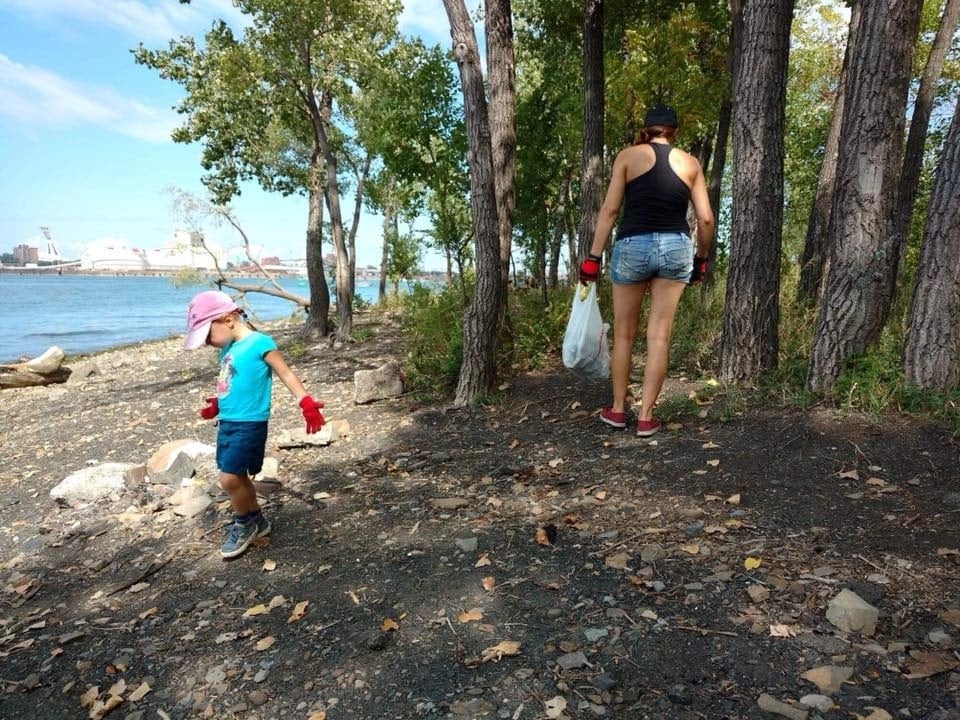
Tip 6: Don’t do it alone
You don’t have to know everything. There are many online resources that can help, and here are just a few:
- To brush up on the basics, read What is climate change? What Canadians need to know and Do fossil fuels cause climate change?
- NASA’s Climate Kids website is full of games, activities, and articles that make climate science understandable and engaging for kids ages 8 and up.
- The Climate Atlas of Canada is a tool that combines science, mapping, and storytelling to help people better understand and visualize climate change. To help educators use this tool in their classrooms, the website offers a teacher’s guide, lesson plans, and a student handbook for grades 10 and 11.
- Earth Rangers Homeroom hosts simple and fun activities for kindergarten through grade 6 to help kids connect with nature and act to protect it. Earth Rangers also has a podcast.
- The Canadian Wildlife Federation has activities and lesson plans in French and English, for pre-kindergarten through highschool. These are meant to inspire deeper love and knowledge of nature and teach kids about climate change.
You’re not alone, and the kids in your life aren’t either. Let them know that they don’t have to fix the climate crisis all by themselves. It will take people from different generations, working together.

